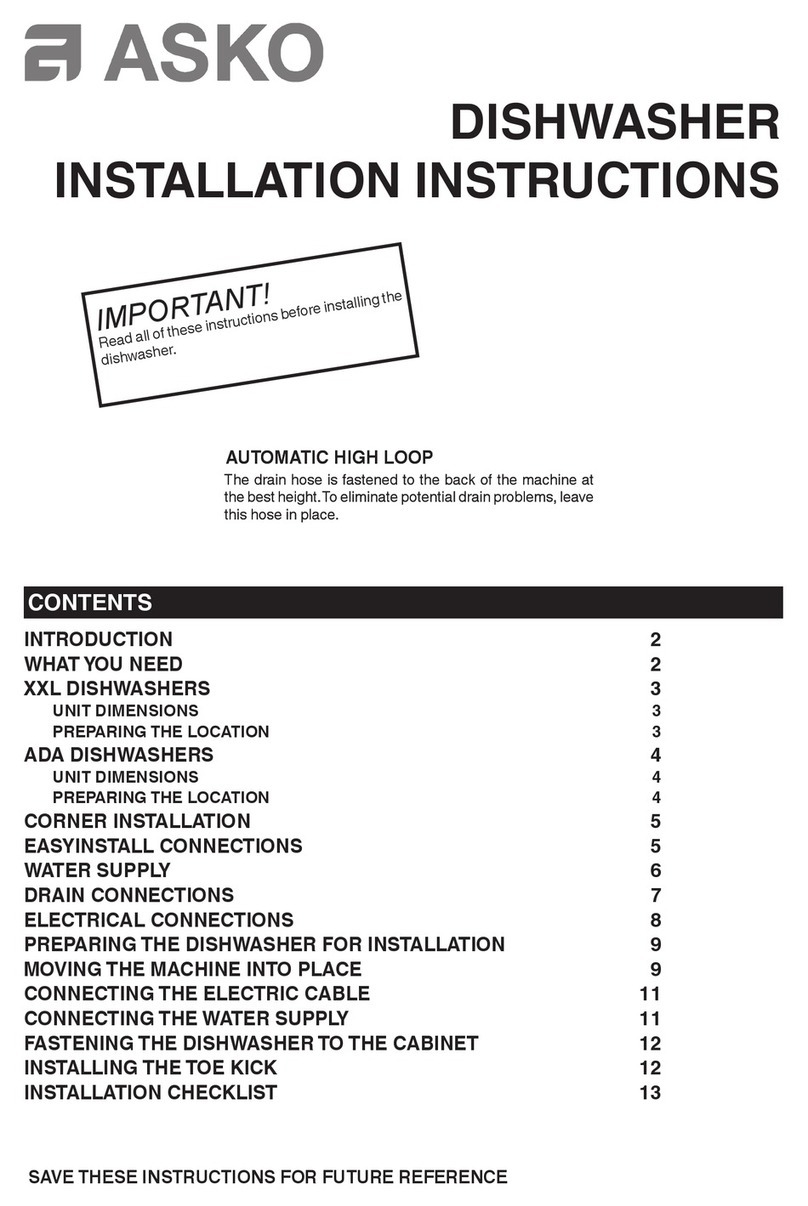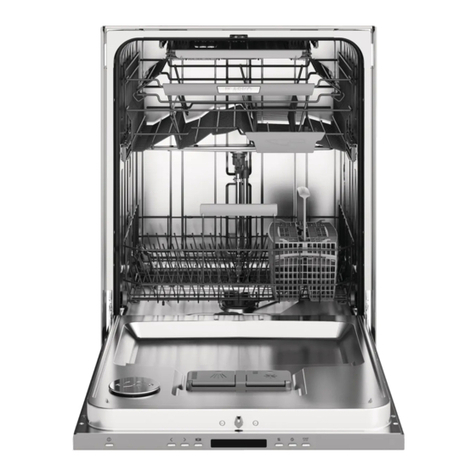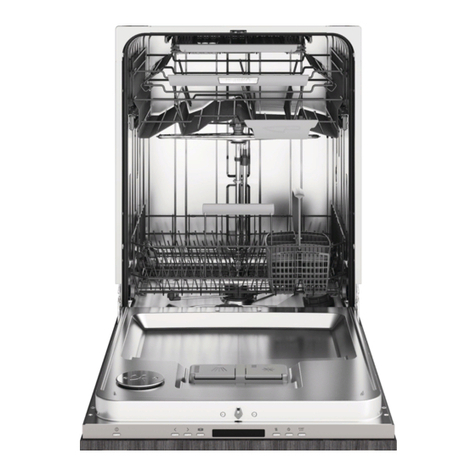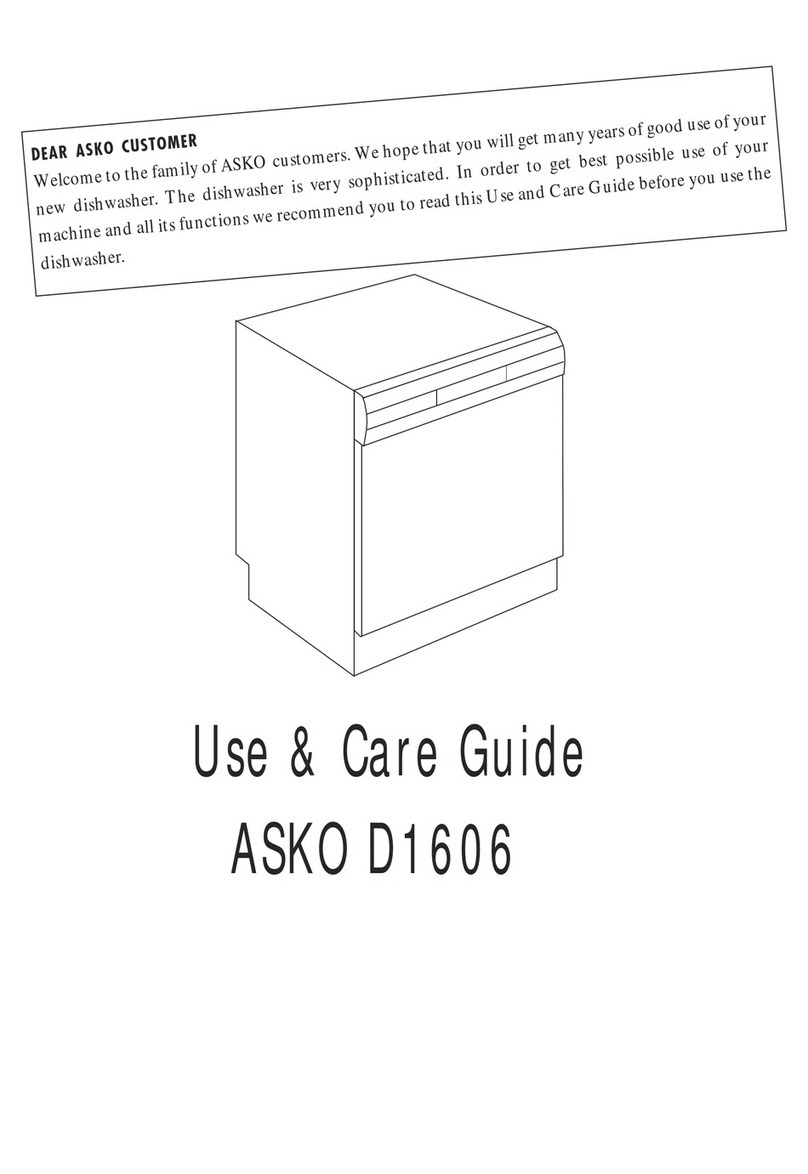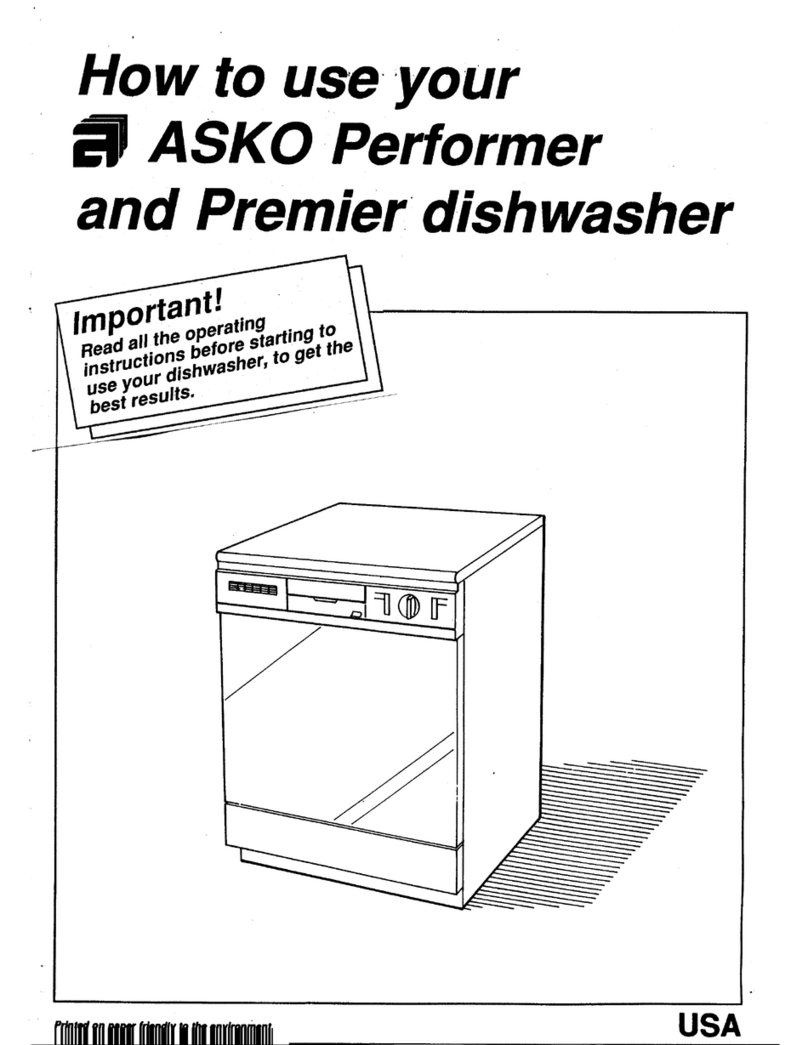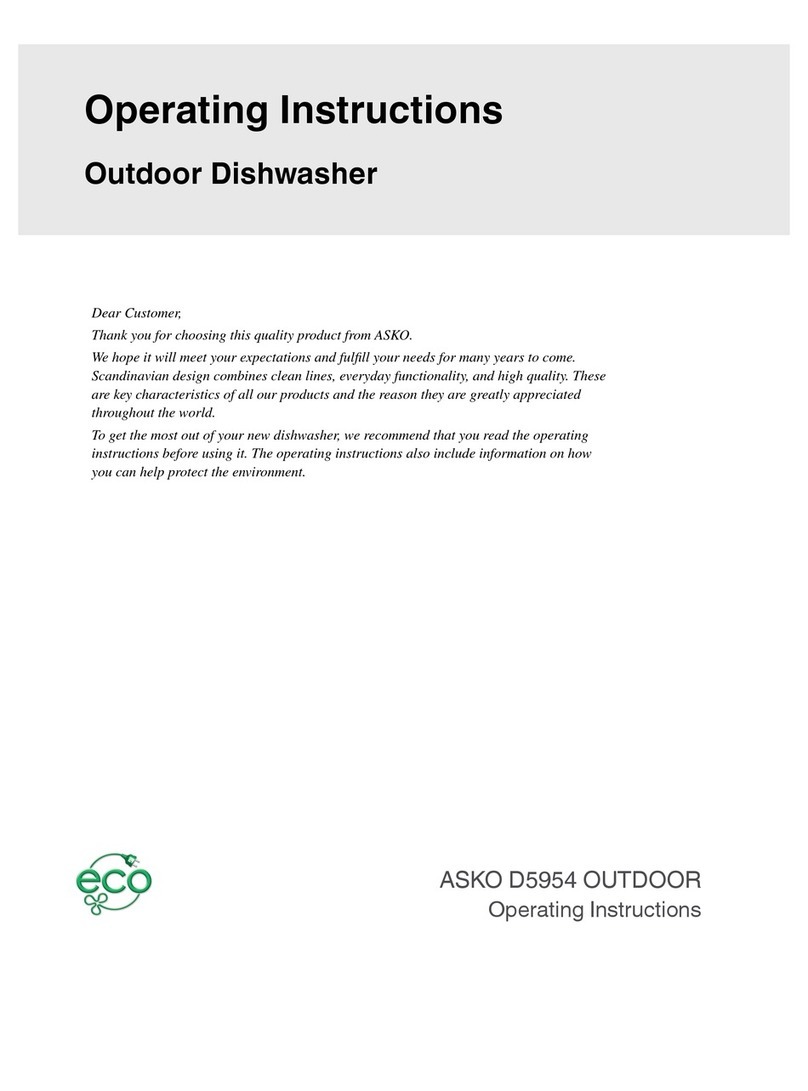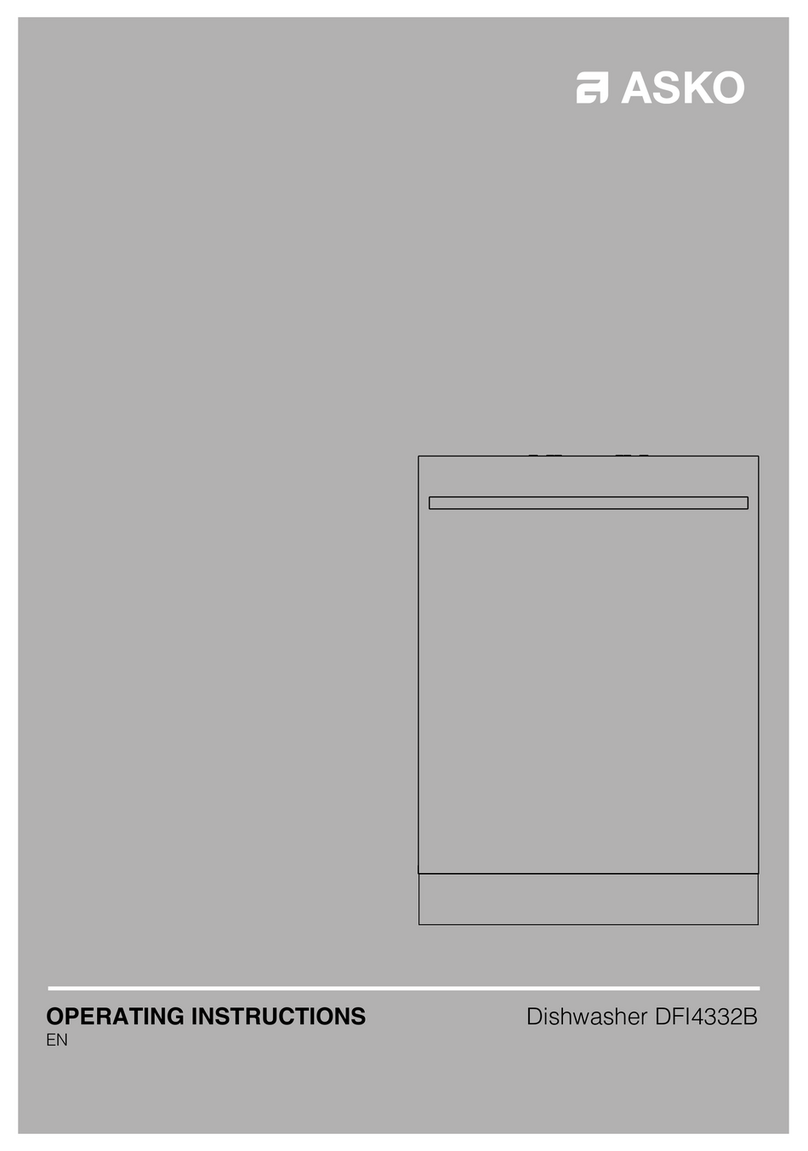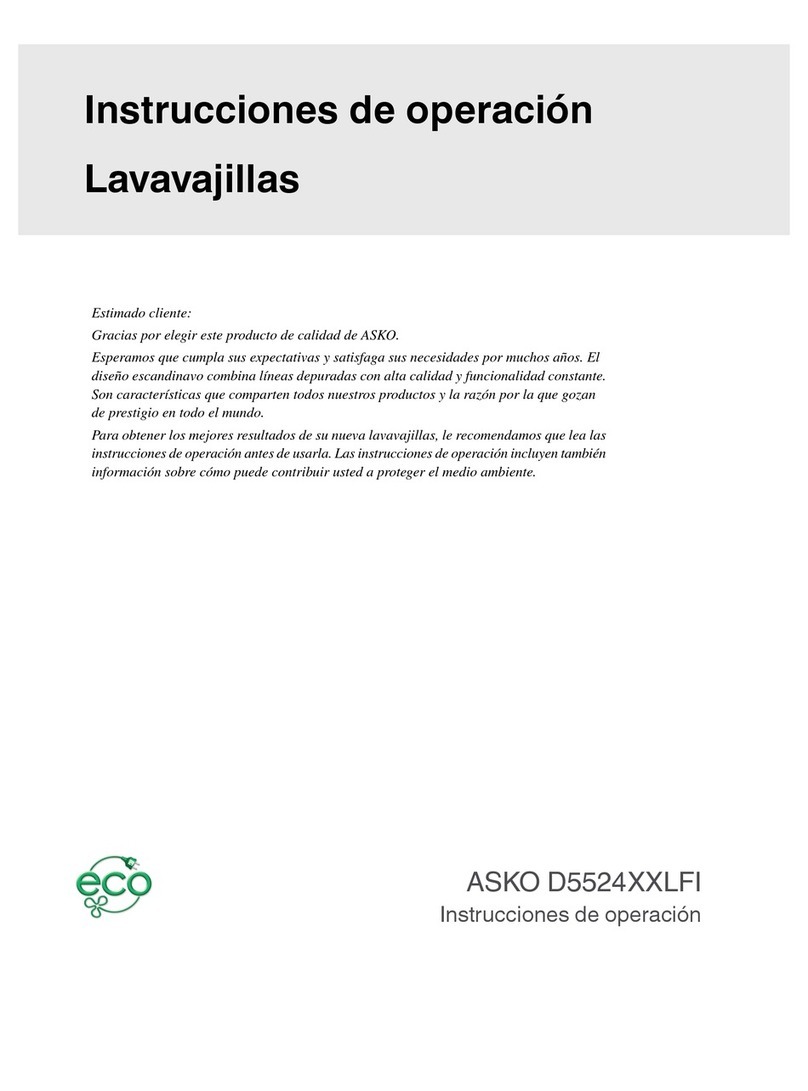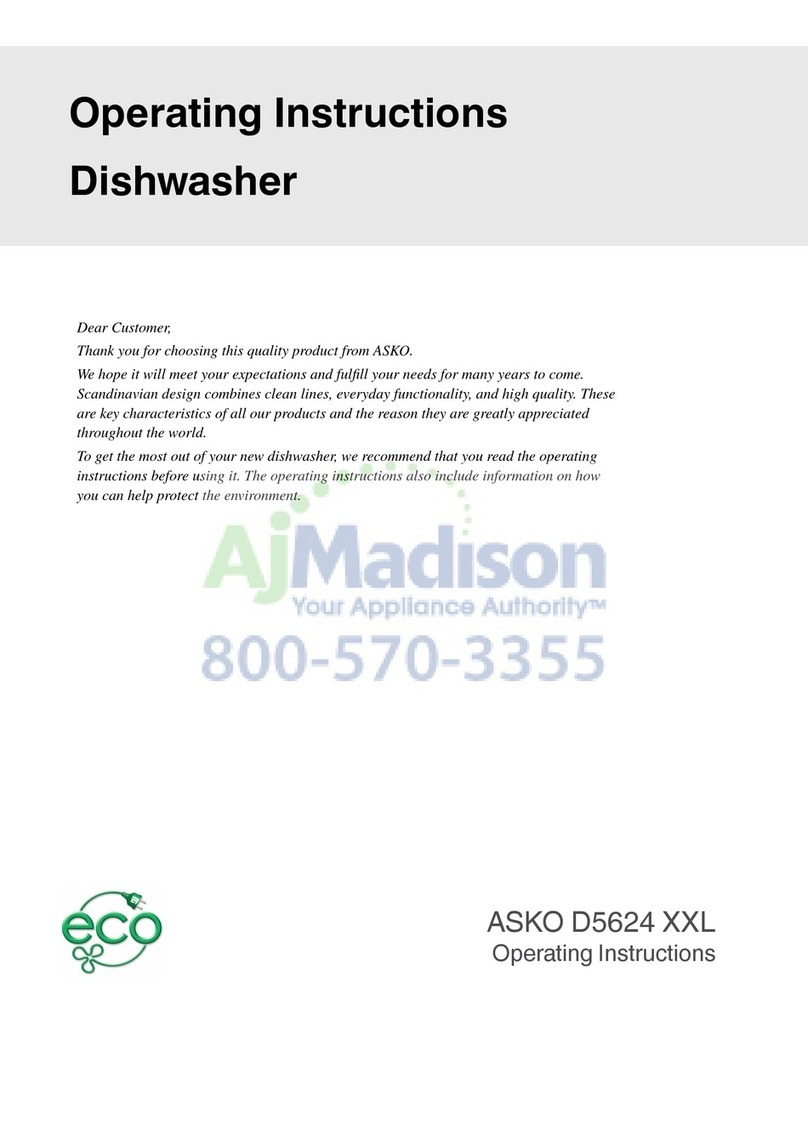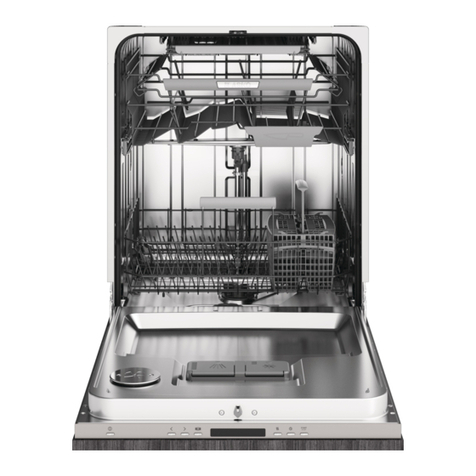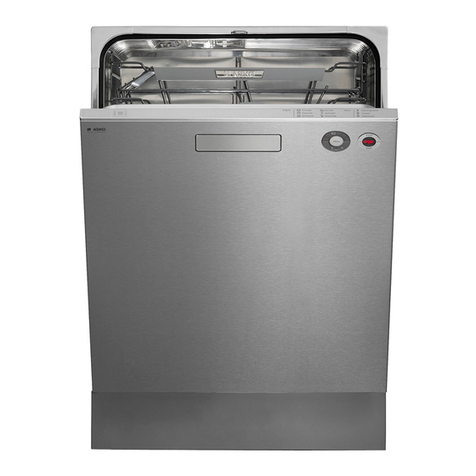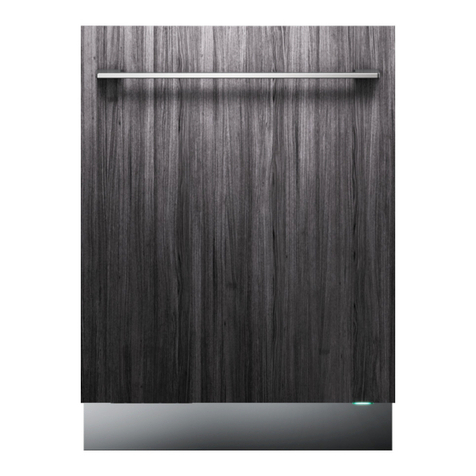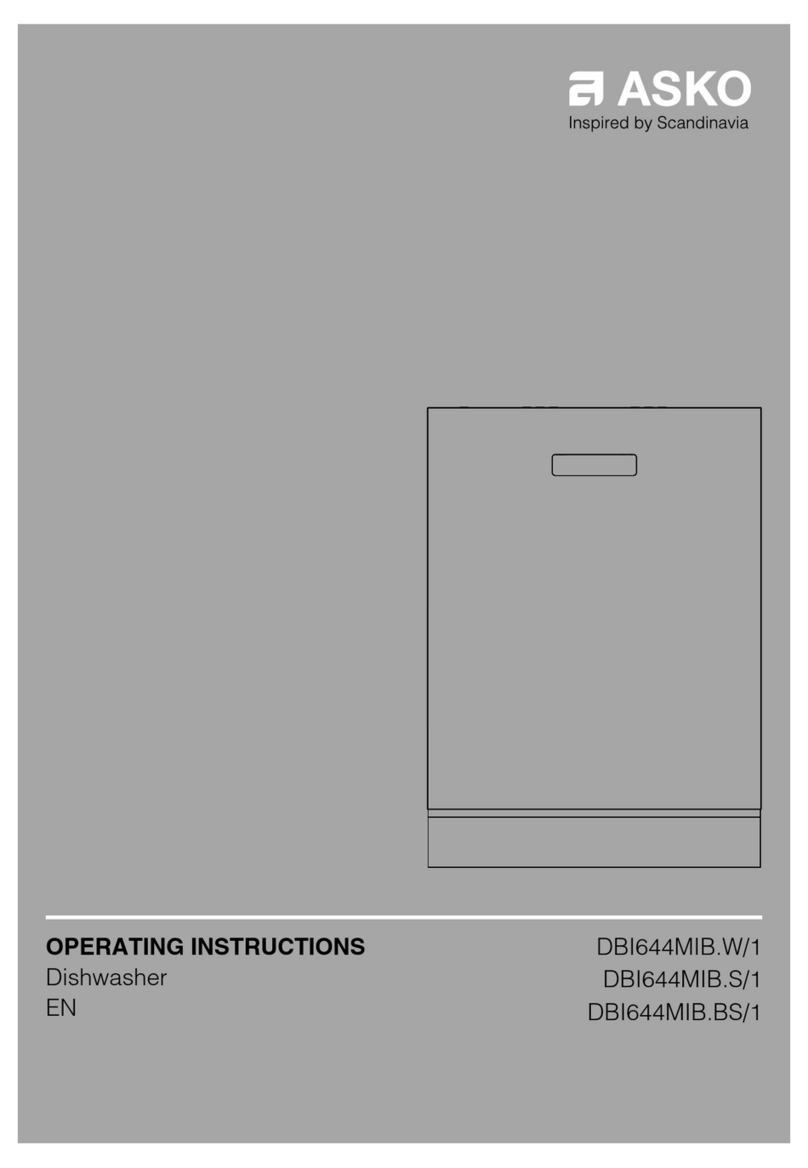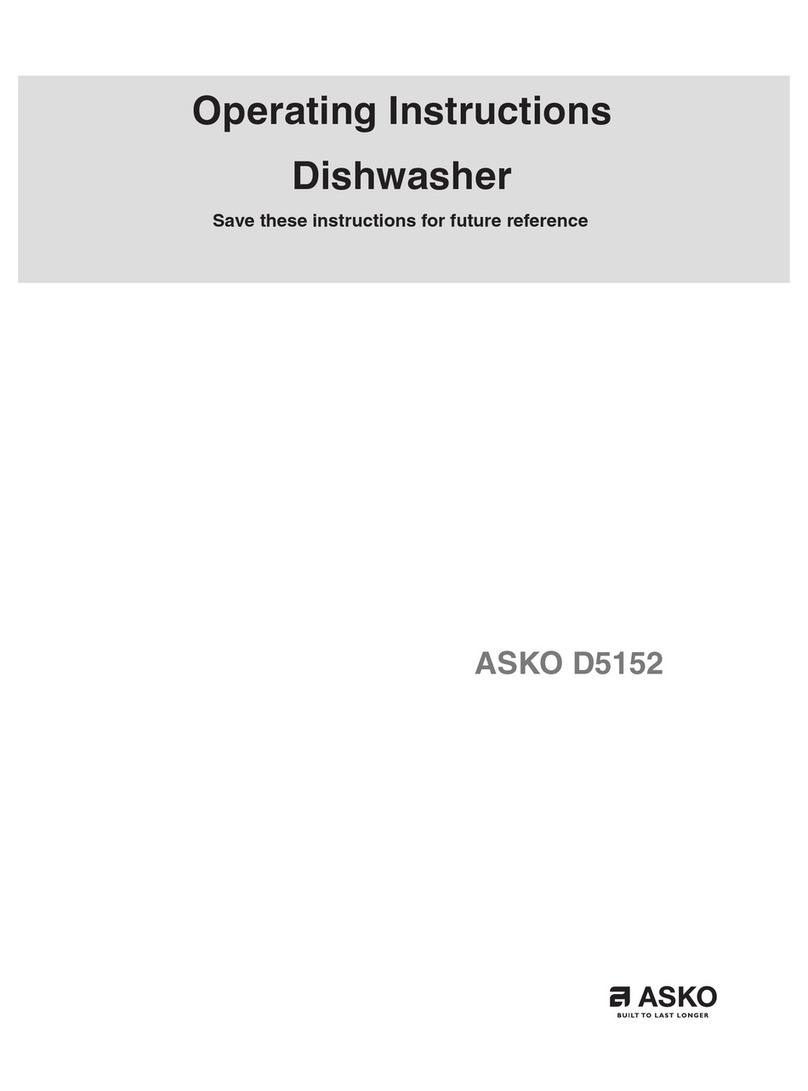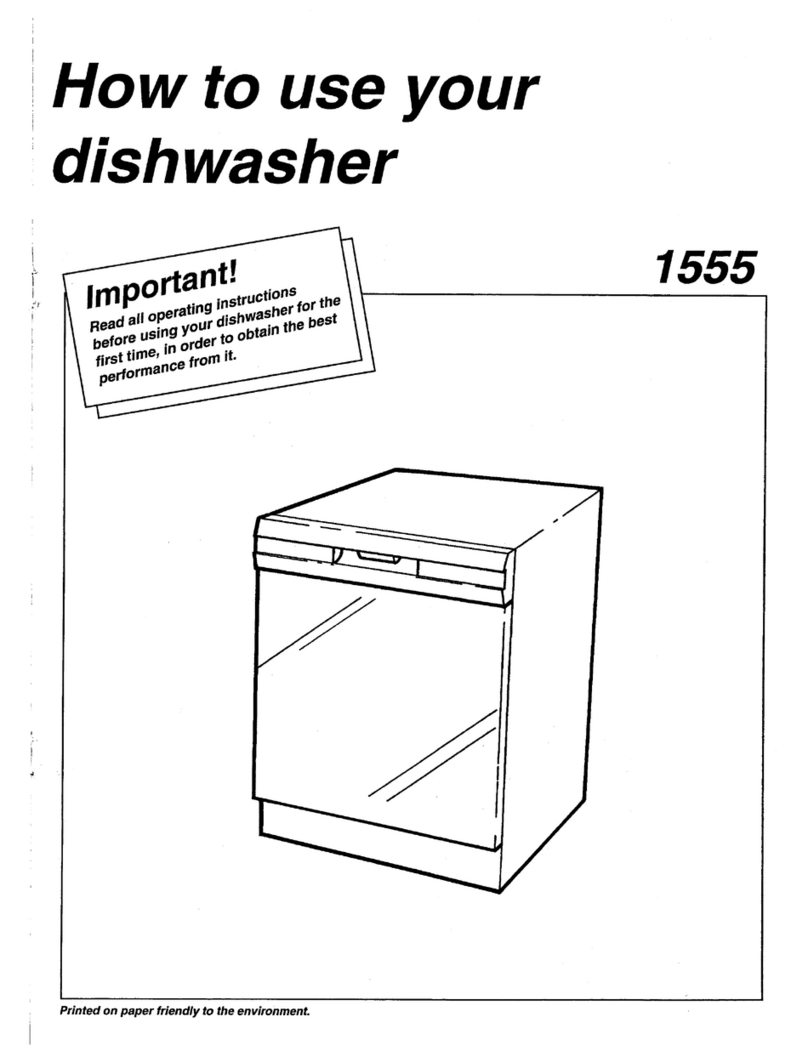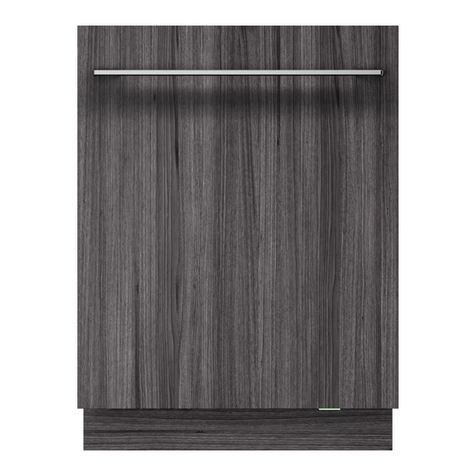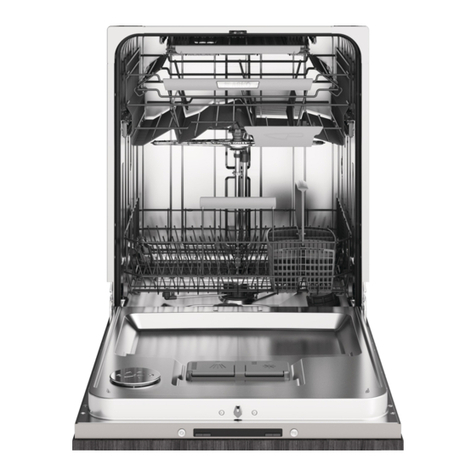
3Your dishwasher ........................................
3Welcome to our growing ASKO family! .......
4Important safety instructions ...................
4General ........................................................
5Child safety ..................................................
5Activate child lock (Kid Safe™) ...................
5Outdoor use .................................................
5Winter storage ..............................................
5Installation ....................................................
5Transport ......................................................
5Overflow guard function ..............................
5Packing material ..........................................
6Disposal .......................................................
7Before washing for the first time ..............
71. Water hardness ........................................
72. Basic settings ..........................................
9Greener dishwashing ................................
9The dishwasher saves energy and water .....
10Loading the dishwasher ............................
10Fragile dishes ..............................................
10Loading affects the results ..........................
10The baskets .................................................
11Upper basket ...............................................
12Lower basket ...............................................
13Cutlery basket ..............................................
14Typical load .................................................
15Using the dishwasher ................................
15Add detergent ..............................................
16The main power switch ................................
16Select program ............................................
17Select program mode ..................................
17Select option ................................................
18Starting the dishwasher ...............................
18Time remaining ............................................
18Stopping or changing a program ................
18If you want to load more dishes ...................
18
If the dishwasher is turned off due to a power
failure ...........................................................
18Once the program has finished ...................
19How to get the best drying results ...............
19Unloading the dishwasher ...........................
20Program chart ..............................................
21Settings .......................................................
21Open the dishwasher's Settings menu ........
23Care and maintenance instructions .........
23Add rinse aid ...............................................
23Cleaning the filters .......................................
24Cleaning the spray arms ..............................
25Clean the dishwasher inside and out ..........
26Remove blockages ......................................
26Winter storage ..............................................
28Troubleshooting .........................................
34Installation instructions ............................
34Important safety instructions ........................
35Transport protection for the door .................
35Operating environment ................................
35Placing the dishwasher ................................
35
Adjust the height and slide the dishwasher
into place .....................................................
36Drain connection ..........................................
38Connection to water supply .........................
38Electrical connection ...................................
40Service ........................................................
40Limited Warranty –Residential Appliances ..
40Items excluded from warranty .....................
41Disclaimer ....................................................
41Limitation of liability ......................................
41Troubleshooting & ASKO Customer Care ....
41Service after expiration of limited warranty ...
42Technical information ................................
42Technical data .............................................
Contents
